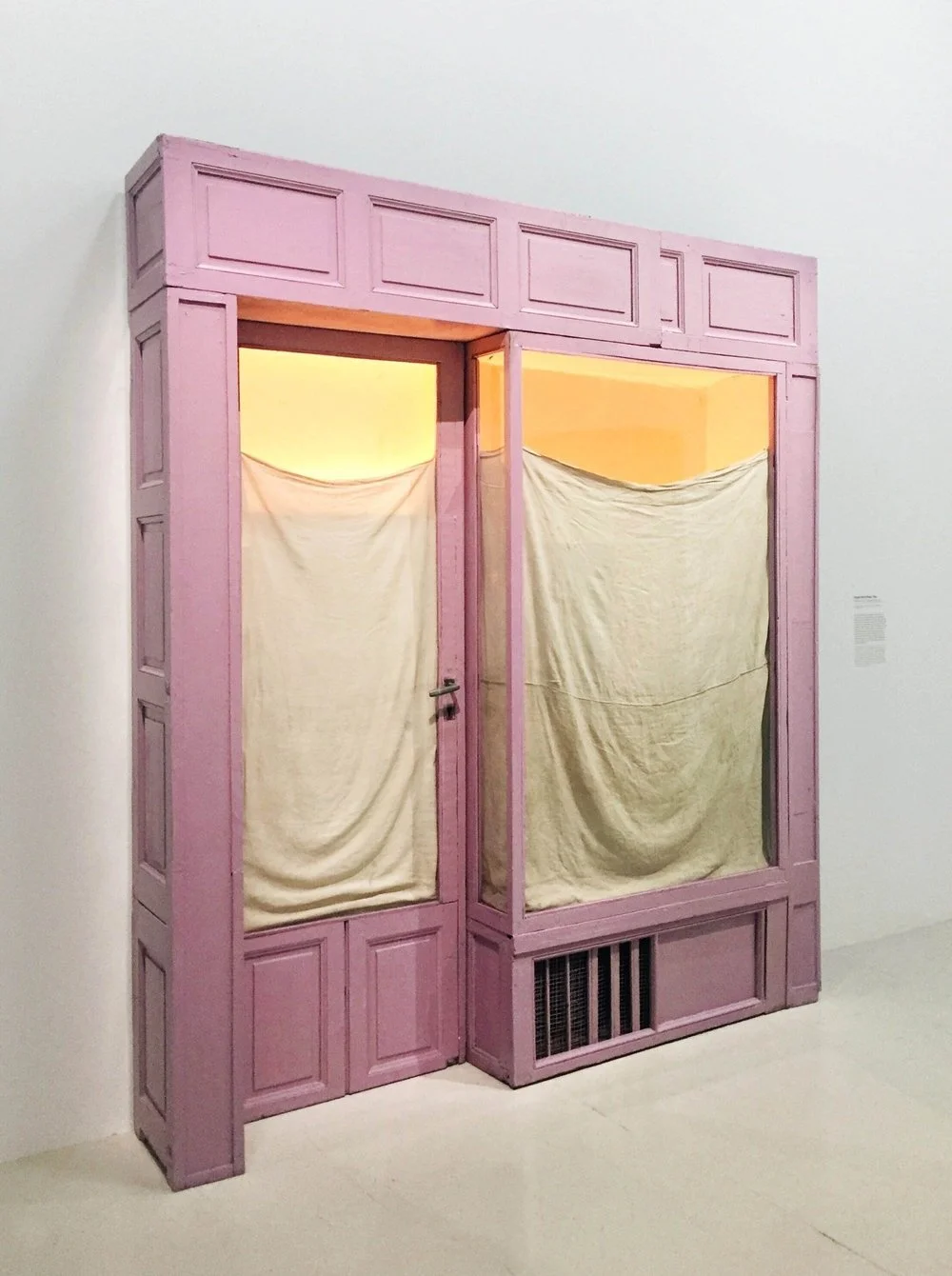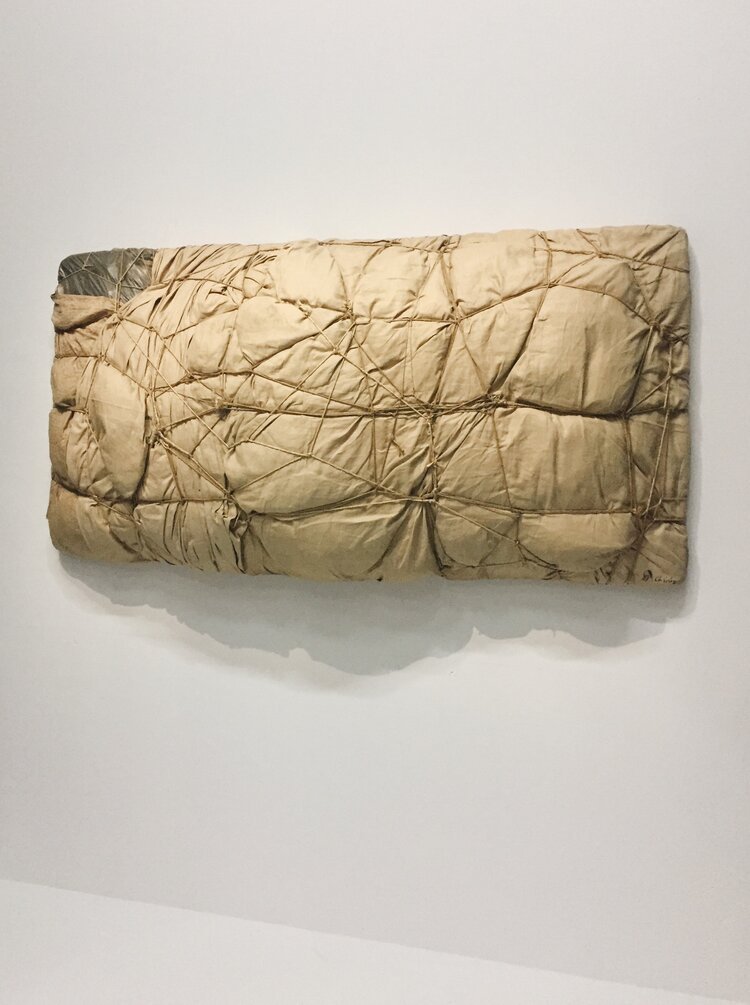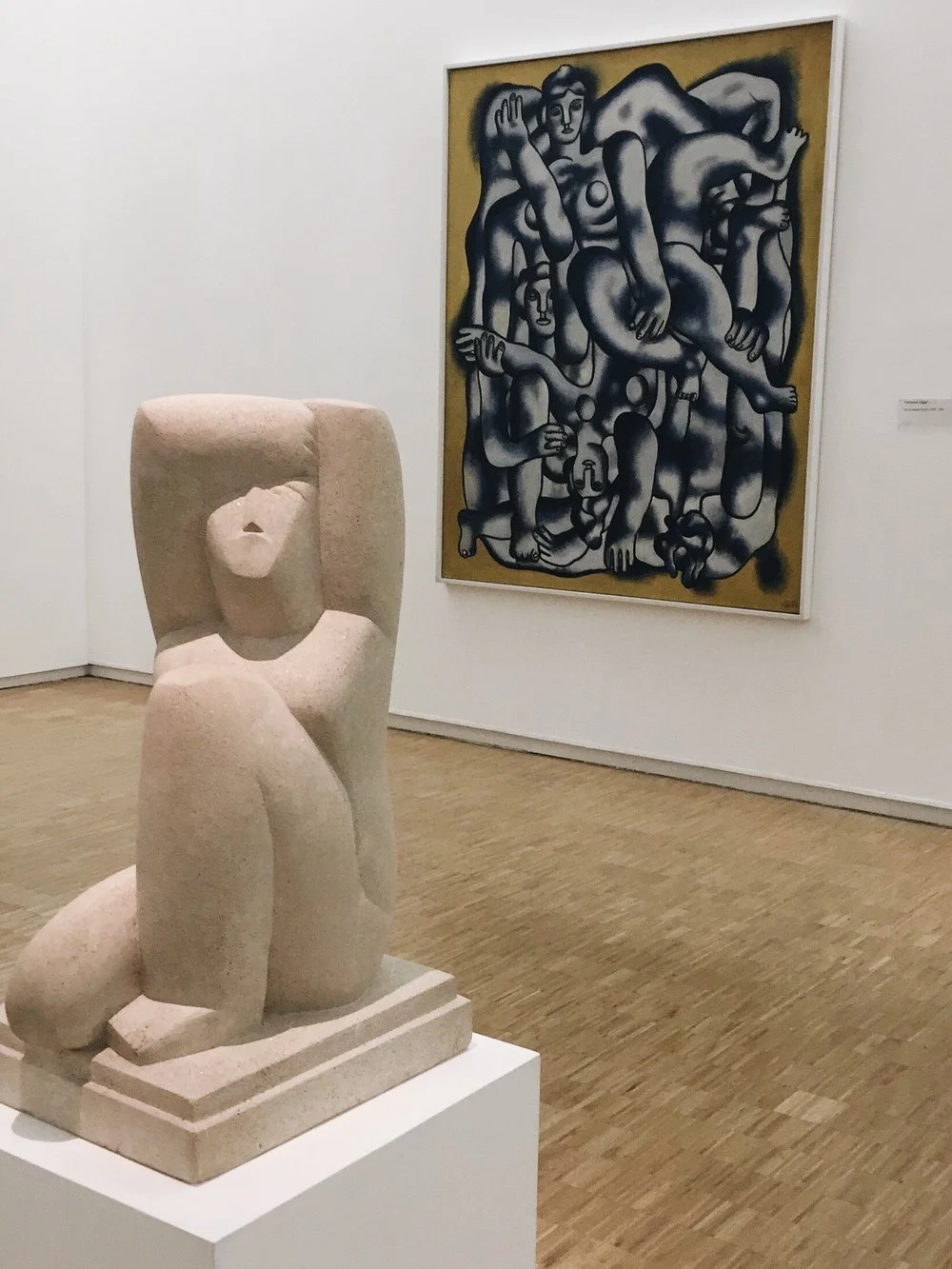Exhibition Review: Christo & Jeanne-Claude at Centre Pompidou
I have visited the Centre Pompidou countless times, and have featured numerous of their exhibitions here on the site. Once again, I spent the afternoon in the iconic building serving as France’s national museum for modern art. Thanks to my status as an art history Master’s student at La Sorbonne, my university granted us a free yearly membership—meaning complimentary access to the entire museum including special exhibitions. I took full advantage of this opportunity to visit the temporary show on view. Here were the highlights:
Pandemic Protocols
Experiencing art in public spaces has been unique as of late. Limited hours, obligatory mask-wearing, vigilant gallery assistants, barricaded pathways…the list goes on. One benefit is a less-crowded museum. In order to enforce social distancing, visitors must buy tickets in advance (you must also specify which exhibitions you plan to see) and request a specific time of entry. If you arrive outside of your assigned time slot, your entry will be denied.
The museum set up specific pathways for visitors, which I actually found made getting around the museum a bit easier—the building is huge and all the stairs, escalators, and elevators can typically make navigation confusing. Only downside is that the exhibitions have a one-way flow, so it is harder to re-visit galleries once you’ve passed them.
Christo et Jeanne Claude - Paris!
I may sound extra enthusiastic, but that’s just the exhibition title. The exclamatory subtitle is meant to evoke the excitement garnered by the whimsical, large-scale public artworks created by artists Christo et Jeanne Claude. The duo rose to fame for their massive site-specific installations which often involved adorning or wrapping landmarks and landscapes with fabric. Over the course of their career, they completed amazing feats including wrapping the Reichstag building, contouring entire islands with pink fabric, and creating a 25-mile long fabric curtain alongside the California shoreline.
They began their techniques with wrapping, called empaquetage, with small objects, canvases and furniture. The art of their practice lied in the enrobing of material and the binding of ropes around everyday objects. This practice most prominently did one of two things: obfuscate the discernible or highlight the structure and essence of an object. In both cases, the empaquetages were meant to conjure imaginations and make viewers rethink the tangible.
Their most famous works were their colossal projects, as they were the most visually-impressive. These undertakings took years of preparation and engineering—not to mention bureaucracy and negotiation. The exhibition is divided into two sections:
The Parisian Years
This section explores the beginnings of Christo’s career: experimentations with wrapping, textured painting, and oil-barrel installations. Most notable is his storefront series, in which he recycled display cases and rebuilt them into conceptual storefront windows that he then concealed from the inside with paper or fabric. It is a perfect display of his increasing interest in architectural dimensions.
The Pont-Neuf Wrapped
The exhibition focuses on a single Christo and Jeanne-Claude public project in order to unveil (literally) with great detail each phase of their process—creatively and logistically.
In 1985, the pair wrapped the oldest bridge in Paris, an idea which took over 10 years to realize from its conception. The exhibition reveals every step, including original sketches, letters of negotiation to local government, displays of construction materials, and photos of the actualized project. Witnessing the process from start to finish is truly remarkable and generates a greater appreciation for their works of art.
The exhibition will be on view until October 19, 2020.
Closing Notes
Christo and Jeanne-Claude’s works emphasized physicality in a manner that heightened everyday experiences. Though the end results of their projects are visually surreal and almost magical, this exhibition reminds us that their artworks are in fact tactical and deeply considerate of the places and people around it—making their work undoubtedly invested in the real world.



















